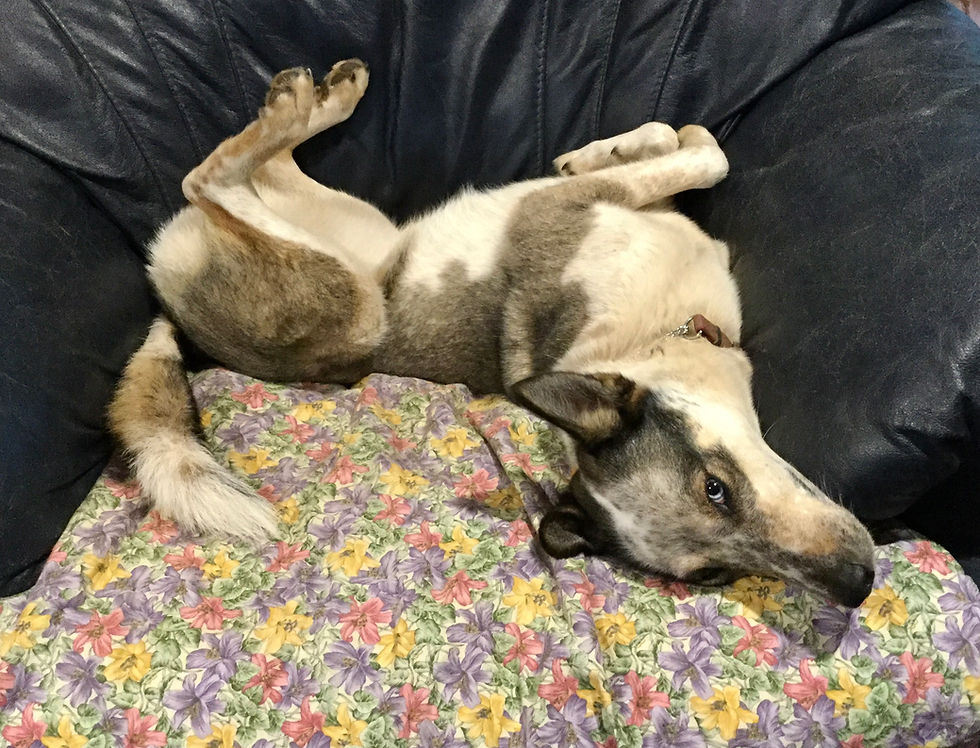Preparing for a Very Long Walk
- Kim Letson

- Aug 8, 2022
- 3 min read
Quite a few people have asked Pat and me how we train for our walks, and we see many similar questions on various on-line distance-walking forums. A person’s training should be dependent on factors such as type of walk, where it will be and how long it will be. Fitness and age are also factors.
For this walk, we’ve been preparing for months, having now put in as many training kilometres as we will on the walk itself. We’ve adapted how we train to suit our aging muscles and joints, so are following the advice of physiotherapist – Lindsay Baker of French Creek Physiotherapy. We had been walking up to twenty kilometres a day twice, then three times a week. Lindsay suggested we walk twenty kilometres every other day throughout June. For July we walked from twenty to twenty-six kilometres every other day and eight to ten on the between days. For August we’ve continued this pattern and are now tapering for the last two weeks. We haven’t been perfect trainees, but we’ve tried to follow this prescription and our bodies feel stronger for it.
Something else we’ve discovered is that to avoid sore feet and fatigue at day’s end, we walk in six-kilometre increments with up to an hour’s break between. Each time we start on the next six kilometres we feel refreshed and energized. During our breaks we hydrate and eat small “lunches.” This schedule eats up eight hours to walk twenty-four kms, but it works well for us.
During our training, we’ve carried packs weighing nearly as much as we’ll take on our trip and have recently increased that weight to the nine kilos that we’ll each have with us. This has allowed our bodies acclimate to the extra stress on feet and knees. Our gait and pace is different from how we walk without packs so this has been an important component in preparation.
As we’re nearing seventy, we’ve also ensured our family physicians are aware of what we’re up to and have sought their affirmation that we’re healthy and fit enough to undertake such a long walk. We’re grateful for their support over the years as we’ve embarked on various adventures. Dr Janet Green has seen Pat off on several arduous MSF missions and long walks and then aided her recovery from the odd trip-related injury. Dr Steve Matous has given me the nod when I’ve gone to teach in Kathmandu, trek at high altitude in Nepal and ride with gauchos in Patagonia. Once again, they have declared that we are hale and fit to take on this next challenge. Thank you, Janet and Steve. We appreciate your support and care.
We’ve also read – extensively – about the route. To cover 2000 kilometres in the time allocated by the EU’s Schengen Agreement – maximum ninety days – we can’t dawdle if we want to make it to Rome. Our Lightfoot guidebook has mapped the Via Francigena as a 102-stage route. Part of our preparation has been figuring out how to shave off twelve days. We’ve done it on paper, so will now see how well our proposed itinerary translates into reality. As will all good plans it is flexible and we’ll adapt to conditions as we find them. Even so, we anticipate being able to arrive in Rome within our ninety-day time allocation.
As with all our adventures, we hope for the best but prepare for the worst. In some places there will be limited or no accommodation. On several areas we’ll spend the day on forested or mountainous trails without passing through any villages until evening. Other days will be more urban with traffic to contend with. We will be crossing the alps in early October – there might be snow. Meantime we are hoping that the heatwave currently plaguing Europe will ease. There will be numerous unexpected challenges along the way, including moments when we’ll be tired, hot, cold, wet, hungry, thirsty, frustrated, maybe even a little bit lost.
We’ll deal with what the trail throws at us because we are physically and mentally prepared to make this journey. It is going to be an adventure full of surprises and moments to remember when we are old.









Comments